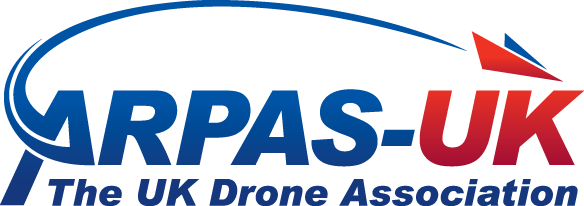Over the last year, there have been an increasing number of stories, reports, and university studies around drones being used to measure pollution, from particles to noise to light. The effects of pollution on the world’s population can’t be disputed. In Europe, the air you breathe could be the death of you. In fact, it could be killing as many as 400,000 people a year prematurely according to the World Health Organisation (WHO). As well as bringing about the early demise of almost half a million people, there are associated health costs that run into hundreds of billions of euros.
This article combines much of what is freely available on the internet, but that when put together shows an increasingly negative picture of our planet. However, drones can help.
In Bangkok, Thailand, a fleet of drones was deployed on 22nd January 2019 to spray water and non-hazardous chemicals into the air in an attempt to reduce pollution. A test run of the drones earlier in the week in a small park showed that the drones reduced dust particles in the air by about 10 micrograms per cubic meter. While the drones were successful on a small scale, more testing needs to be done to see if the drones could cover a larger area and clear pollution out of the entire city.
In Seoul, South Korea last summer the Ministry of Enviornment tasked drones with inspecting factory emissions in the capital’s greater metropolitan area. It’s the latest in a series of tech solutions aimed at solving Seoul’s dust dilemma – which has become so serious that earlier this year the city government declared it an emergency.
In Shanghai, China, a domestically-produced drone aircraft designed to disperse smog was tested on Saturday, official media reported, in an important step for the country’s domestic aviation industry. Almost all Chinese cities monitored for pollution last year failed to meet state standards. The environment has emerged as one of Beijing’s key priorities amid growing public disquiet about urban smog, dwindling and polluted water supplies and the widespread industrial contamination of farmland.
With more than 1,400 islands, maritime and air transports are common in Greece. Tests carried out in Santorini demonstrated that concentrations of ultra-fine particles were up to 100 times higher near the ports. But in recent years, the situation has been improved thanks to better fuels and replacement of polluting old technology. The evaluation of air quality and pollution has been traditionally conducted by ground based monitoring. Complexity of the terrain and physical barriers usually complicate data collection, augmenting costs and decreasing efficiency and performance. The drones, used in a study at the Industrial, Energy and Environmental Systems Laboratory of the Technical University of Crete, were able to capture air pollutant emissions and to create a 3D visualization tool of a determined area. The sensors were able to measure:
- air temperature,
- atmospheric pressure,
- humidity,
- carbon monoxide (CO),
- carbon dioxide (CO2),
- sulfur dioxide (SO2),
- ozone (O3),
- nitrogen dioxide (NO2),
- and ammonia (NH3).
Drones equipped with compact sensors can provide data at nearly any point in a three-dimensional axis. This interesting characteristic favours the reduction of sensor nodes used in every smart cities or smart environment project, diminishing the total cost of the solution. Additionally, permits the user to obtain local data for production monitoring, problem detection and local climate control
Hong Kong authorities are set to ramp up the fight against air pollution from ships by flying drones to monitor emissions. Hong Kong environmental inspectors will take to the skies to police the city’s waters with drones to help enforce a new law requiring ships to burn cleaner marine fuels. Dr Zhi Ning of the university’s environment and sustainability division, who led the one-year research project – funded by the Environmental Protection Department at a cost of HK$1.1 million (US$140,193) – said the idea was to provide support to what would otherwise be time- and labour-intensive enforcement work. In Norway, the Norwegian Maritime Authority plans to use drones equipped with sensors to measure sulphur content from ships’ exhaust systems in its inspection work. $1.7million was invested in the project.
In the skies above Katowice, Poland, in the heart of country’s coal industry, Polish officials are deploying the latest weapon against air pollution: drones that inspect the city’s chimneys. As soon as one of the unmanned aerial vehicles spots suspicious smoke rising from a rooftop, a second one follows up to “sniff” for pollutants with its chemical sensors. Ground-based operators then send police officers to knock on the door of the offending home to see if they are burning poor quality coal, plastic bottles or some other substance. “Most people decide to pay a fine immediately rather than go to court,” Katowice police spokesman Jacek Pytel told AFP, adding that fines can be up to 120 euros ($148). The fight against air pollution is crucial, with a World Health Organisation’s report showing that 36 of the most polluted places in Europe are in Poland.
In Spain, a drone company is taking to the skies to combat a rising global problem – light pollution. They are developing a method to map areas at night to determine the optimal process for street-light deployment in major cities – a process that can help mitigate light pollution.
Drones are specially considered for measuring and monitoring air pollution because of their mobility and convenient flying-movement. UAVs can monitor noise, traffic, light, wind, temperature, humidity, air quality and many other parameters. We will become increasingly familiar with such drones in the fight to save our planet from the effects of the industrial age.
Elena Major
11/2/2019


